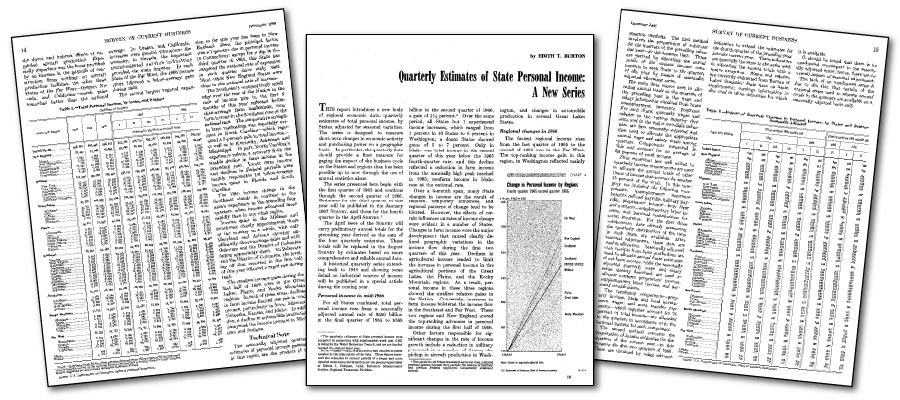The Evolution of BEA's Regional Statistics
Expanding State Personal Income Measurements
The Regional Economic Accounts at the Bureau of Economic Analysis (BEA) have expanded and evolved over the decades to better measure state and local economies. One flagship measurement—state personal income—was first reported in the Survey of Current Business in 1940 and covered income payments to individuals on an annual basis for the period 1929–1938. This annual measurement served as the only state personal income statistics reported until December 1966, when the U.S. Department of Commerce Office of Business Economics, a predecessor agency to BEA, released a new series in the Survey—quarterly estimates of state personal income.
The pages of the December 1996 Survey article “Quarterly Estimates of State Personal Income: A New Series.”
This new series was developed “to measure short-term changes in economic activity and purchasing power on a geographic basis.” The quarterly data provided a finer measure for assessing the impact of the business cycle on states and regions than had been possible using annual statistics. The first quarterly estimates covered the first quarter of 1965 through the second quarter of 1966. Over time, the statistics were updated extending back to 1948 and included more comprehensive and reliable annual data as well as detail on industry sources.
As BEA celebrates the centennial of the publication of the first issue of the Survey, we are looking back at milestones in the history of our accounts. These quarterly state personal income statistics are one example of the evolution of BEA's regional products, which now include personal income by county and metro area, gross domestic product by state and county and metro area, as well as consumer spending and employment data, among others. We are pleased to reprint the December 1996 Survey article “Quarterly Estimates of State Personal Income: A New Series.” For more information on the development of BEA's regional statistics, see “BEA's Regional Program: Challenges and Milestones,” also in this issue of the Survey.
